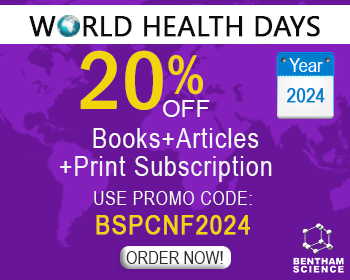Abstract
Obesity, as an unfavorable consequence of our modern lifestyle, can promote the emergence of other disorders, like diabetes and cardiovascular disease, that negatively impact quality of life. Therefore, prevention and treatment of obesity and its related comorbidities are critical. Lifestyle modification is the first and most important step but, in practical terms, presents a major challenge to many patients. So, the development of new strategies and therapies is critical for these patients. Although herbal bioactive compounds have recently gained attention for their ability to prevent and treat conditions related to obesity, no ideal pharmacological treatment has been found to treat obesity. Curcumin, one of the compounds extracted from turmeric, is a well-studied active herbal extract; however, its poor bioavailability and solubility in water, instability against temperature, light and pH fluctuations and rapid excretion limit its therapeutic application. Curcumin modification can, however, provide novel analogues with better performance and fewer disadvantages in comparison to the original structure. In the past few years, the positive effects of synthetic analogues of curcumin for the treatment of obesity, diabetes and cardiovascular disorders have been reported. In this review, we evaluate the strengths and weaknesses of the reported artificial derivatives and assess their practicality as therapeutic agents.
Keywords: Curcumin, synthetic analogue, obesity, diabetes, cardiovascular disease, treatment.
[http://dx.doi.org/10.1177/0272684X15569487] [PMID: 30796508]
[http://dx.doi.org/10.1177/0272684X15569487] [PMID: 25856805]
[http://dx.doi.org/10.48550/arXiv.1208.1923]
[http://dx.doi.org/10.1186/2251-6581-12-28] [PMID: 23777875]
[http://dx.doi.org/10.1161/CIRCULATIONAHA.111.039453] [PMID: 22392863]
[http://dx.doi.org/10.1016/j.phrs.2017.12.020] [PMID: 29287685]
[http://dx.doi.org/10.1016/j.jacc.2007.12.048] [PMID: 18452784]
[http://dx.doi.org/10.1111/j.0001-6349.2004.00624.x] [PMID: 15488115]
[http://dx.doi.org/10.1097/MED.0b013e3282f1d6cb] [PMID: 17982356]
[http://dx.doi.org/10.1038/nature05487] [PMID: 17167476]
[http://dx.doi.org/10.1016/j.dsx.2017.04.005] [PMID: 28420578]
[http://dx.doi.org/10.1016/j.saa.2016.11.049] [PMID: 28033562]
[http://dx.doi.org/10.1016/j.jddst.2015.05.010]
[http://dx.doi.org/10.1016/j.jchromb.2016.12.011] [PMID: 27978467]
[http://dx.doi.org/10.3390/molecules16064567] [PMID: 21642934]
[http://dx.doi.org/10.1016/j.neuroscience.2019.02.020] [PMID: 30825584]
[http://dx.doi.org/10.1016/j.phrs.2019.104353] [PMID: 31306775]
[http://dx.doi.org/10.3390/nu11081837] [PMID: 31398884]
[http://dx.doi.org/10.1007/978-3-030-73234-9_6] [PMID: 34981472]
[http://dx.doi.org/10.1002/ptr.6324] [PMID: 30834628]
[http://dx.doi.org/10.1016/j.tifs.2020.03.026]
[http://dx.doi.org/10.1016/j.phrs.2017.02.008] [PMID: 28192240]
[http://dx.doi.org/10.1016/j.phrs.2020.104765] [PMID: 32217147]
[http://dx.doi.org/10.1055/s-0034-1389986] [PMID: 25268878]
[http://dx.doi.org/10.1016/j.phrs.2018.09.012] [PMID: 30219581]
[http://dx.doi.org/10.1016/j.fertnstert.2010.07.1071] [PMID: 20797714]
[http://dx.doi.org/10.2174/1875533XMTExtNDA8x] [PMID: 33176632]
[http://dx.doi.org/10.1016/j.ctim.2017.05.006] [PMID: 28735818]
[http://dx.doi.org/10.1097/CEJ.0b013e32832c389e] [PMID: 19531956]
[http://dx.doi.org/10.3390/nu14020256] [PMID: 35057437]
[http://dx.doi.org/10.5114/aoms.2020.93739] [PMID: 33488874]
[http://dx.doi.org/10.1016/j.phrs.2020.104921] [PMID: 32464325]
[http://dx.doi.org/10.1002/ptr.7350] [PMID: 34904764]
[http://dx.doi.org/10.1016/j.biopha.2022.113621] [PMID: 36055110]
[http://dx.doi.org/10.1016/j.autrev.2017.11.016] [PMID: 29180127]
[http://dx.doi.org/10.1093/pm/pnv024] [PMID: 26814259]
[http://dx.doi.org/10.1021/jf501145b] [PMID: 24901506]
[http://dx.doi.org/10.3390/molecules21030264] [PMID: 26927041]
[http://dx.doi.org/10.1016/j.foodchem.2014.01.012] [PMID: 24518344]
[http://dx.doi.org/10.1371/journal.pone.0121665] [PMID: 25906061]
[http://dx.doi.org/10.1088/1755-1315/332/3/032016]
[http://dx.doi.org/10.1016/j.ejmech.2016.09.033] [PMID: 27689730]
[http://dx.doi.org/10.1016/j.tifs.2013.10.002]
[http://dx.doi.org/10.1136/bmj.328.7442.750] [PMID: 15044291]
[http://dx.doi.org/10.2337/diacare.21.9.1414] [PMID: 9727886]
[http://dx.doi.org/10.2337/diab.37.12.1595] [PMID: 3056758]
[http://dx.doi.org/10.1078/0944-7113-00015] [PMID: 11315761]
[http://dx.doi.org/10.1007/BF02867969] [PMID: 23105348]
[http://dx.doi.org/10.1023/A:1013106527829] [PMID: 11855620]
[http://dx.doi.org/10.1023/A:1006819605211] [PMID: 9046034]
[http://dx.doi.org/10.1023/A:1006821828706] [PMID: 9562245]
[http://dx.doi.org/10.1016/0006-2952(96)00302-4] [PMID: 8759023]
[http://dx.doi.org/10.1515/JBCPP.2005.16.4.257] [PMID: 16438392]
[http://dx.doi.org/10.1093/clinchem/21.12.1754] [PMID: 1237363]
[http://dx.doi.org/10.1016/S0021-9258(18)84814-1]
[http://dx.doi.org/10.1016/0009-8981(81)90312-0] [PMID: 7226519]
[http://dx.doi.org/10.1002/mnfr.200700184] [PMID: 18398869]
[http://dx.doi.org/10.1371/journal.pone.0028784] [PMID: 22253696]
[http://dx.doi.org/10.1124/jpet.113.208728] [PMID: 24549372]
[http://dx.doi.org/10.1111/j.1471-4159.2008.05236.x] [PMID: 18208543]
[http://dx.doi.org/10.1126/science.283.5407.1544] [PMID: 10066179]
[http://dx.doi.org/10.1074/jbc.271.33.19810] [PMID: 8702689]
[http://dx.doi.org/10.1007/BF00400479] [PMID: 1612224]
[http://dx.doi.org/10.1016/S0162-0134(99)00152-X] [PMID: 10605840]
[http://dx.doi.org/10.1016/S0162-0134(00)00045-3] [PMID: 10885469]
[http://dx.doi.org/10.1016/S0021-9258(17)41818-7] [PMID: 8308031]
[http://dx.doi.org/10.1007/978-1-4613-1251-2_6]
[PMID: 2675634]
[http://dx.doi.org/10.1016/0378-4274(84)90131-0] [PMID: 6334379]
[http://dx.doi.org/10.1139/y93-041] [PMID: 8402390]
[http://dx.doi.org/10.1016/j.jtemb.2004.12.001] [PMID: 15966569]
[PMID: 4637293]
[http://dx.doi.org/10.3109/14756366.2015.1004061] [PMID: 25683079]
[http://dx.doi.org/10.1016/0891-5849(88)90036-6] [PMID: 3075947]
[http://dx.doi.org/10.1016/j.foodchem.2005.05.063]
[http://dx.doi.org/10.1152/ajplung.2000.279.6.L1029] [PMID: 11076792]
[http://dx.doi.org/10.1186/1758-5996-4-30] [PMID: 22762693]
[http://dx.doi.org/10.1016/j.bmc.2003.10.005] [PMID: 14697785]
[http://dx.doi.org/10.1021/jm9707232] [PMID: 9767632]
[http://dx.doi.org/10.1016/j.bmcl.2009.01.019] [PMID: 19179077]
[http://dx.doi.org/10.1016/S0960-894X(02)00832-6] [PMID: 12467629]
[http://dx.doi.org/10.1016/j.bmcl.2005.05.064] [PMID: 15993583]
[http://dx.doi.org/10.1016/j.bbrc.2007.01.117] [PMID: 17286965]
[http://dx.doi.org/10.1016/j.bmc.2008.02.012] [PMID: 18295490]
[http://dx.doi.org/10.1016/j.bmcl.2008.03.034] [PMID: 18372174]
[http://dx.doi.org/10.1016/j.vph.2007.03.003] [PMID: 17459781]
[http://dx.doi.org/10.1248/bpb.26.1135] [PMID: 12913265]
[PMID: 9228665]
[http://dx.doi.org/10.1016/0024-3205(88)90674-1] [PMID: 2447464]
[http://dx.doi.org/10.2337/dc09-S330] [PMID: 19875572]
[http://dx.doi.org/10.1016/j.cardiores.2007.06.004] [PMID: 17617392]
[http://dx.doi.org/10.1016/j.bmc.2015.09.004] [PMID: 26386817]
[http://dx.doi.org/10.1007/s40292-015-0120-5] [PMID: 26403596]
[http://dx.doi.org/10.1016/j.tips.2008.11.002] [PMID: 19110321]
[http://dx.doi.org/10.1021/mp700113r] [PMID: 17999464]
[PMID: 26792980]
[http://dx.doi.org/10.1016/j.vascn.2006.05.006] [PMID: 16844390]
[http://dx.doi.org/10.1056/NEJMra011775] [PMID: 11961152]
[http://dx.doi.org/10.1111/j.1572-0241.2007.01774.x]
[http://dx.doi.org/10.1093/qjmed/hcp158] [PMID: 19914930]
[http://dx.doi.org/10.1002/hep.23719] [PMID: 20683968]
[http://dx.doi.org/10.1002/path.2697] [PMID: 20225336]
[http://dx.doi.org/10.3803/EnM.2013.28.1.6] [PMID: 24396643]
[http://dx.doi.org/10.1002/ptr.5659] [PMID: 27270872]
[http://dx.doi.org/10.1016/j.metabol.2019.154015] [PMID: 31758951]


























